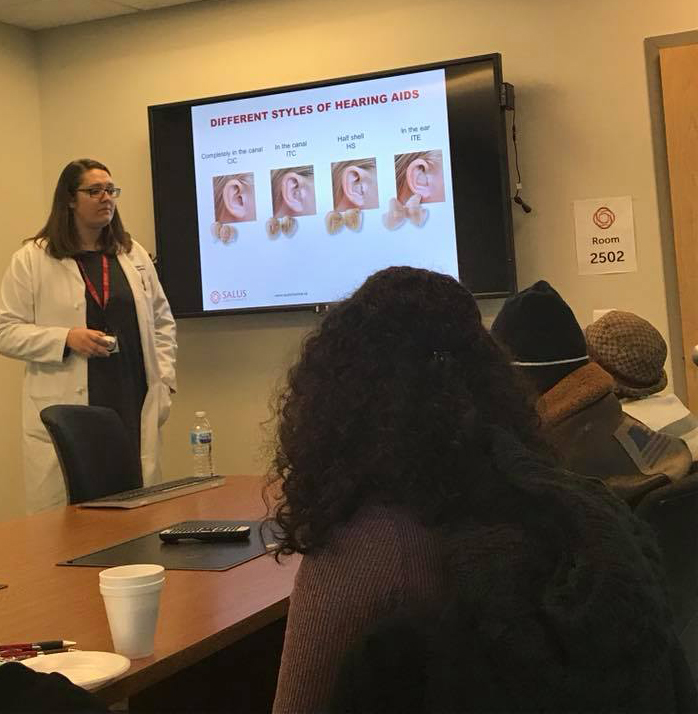Five Common Questions About Hearing Aids
 Hearing aids are a great solution to help those who have experienced hearing loss. The purchase of hearing aids can be a significant investment and patients often have many questions regarding their usage and benefits. Dr. Elizabeth Sedunov, audiologist at the Pennsylvania Ear Institute, answers five common questions about hearing aids.
Hearing aids are a great solution to help those who have experienced hearing loss. The purchase of hearing aids can be a significant investment and patients often have many questions regarding their usage and benefits. Dr. Elizabeth Sedunov, audiologist at the Pennsylvania Ear Institute, answers five common questions about hearing aids.
Q: Do patients always hear better with hearing aids?
That’s definitely one of the most common questions I get. The answer is yes - most of the time you are going to hear better with hearing aids. That’s not to say that your hearing will be perfect but hearing aids will improve how you hear in a lot of different environments. Hearing aids can help re-amplify sounds to a level where you can perceive them but even with the most advanced technology, the sound still has to travel through your impaired auditory system.
Q: How long does it take to get used to wearing hearing aids?
It takes your brain at least one month to actually get used to wearing hearing aids. Look at it this way—the average person visits an audiologist about seven to 10 years after they first started having hearing loss issues. If that same person starts wearing hearing aids but they’ve been missing out on all of these different sounds for that long, it can be quite a challenge learning to readjust.
Q: What are different hearing aid styles currently available?
One of the styles we fit a lot of patients for is the receiver in the canal style. There’s a part that sits behind the ear and it has a thin wire with a molded piece that goes down into the ear. This type of hearing aid is easy to wear and a lot of patients like it because it’s not very noticeable while being worn. It’s also very versatile and can fit a wide variety of patients.
There is also the behind the ear style. It has a hallow tube that goes into an ear mold and all of the mechanical pieces and parts fit behind the ear. It provides more power and it’s a little bit more durable as well. This type of hearing aid is often fitted for patients who have more significant hearing loss. Children are also fit with this kind of hearing aid style a lot because the ear mold detaches and can be easily refitted as the child grows.
Technology has advanced so much in the last decade and there are so many styles out there. Really what I would suggest is that patients talk with their audiologist. Based on the severity of their hearing loss and listening goals, their audiologist can help them find the right style.
Q: What are some popular hearing aid accessories?
Nowadays if you have a smartphone, there are so many options available. You can download different apps on your phone that allow you to use Bluetooth to stream conversations through your hearing aids. There are accessories like the Roger Pen – which is really useful for people in classroom settings. You can hand the device to the person speaking and it will transmit their sound directly to the receivers connected to your hearing aids. There are also assistive listening devices, which are separate from your hearing aids. These devices can be used along with hearing aids or alone. For example, if you have a hard time hearing while talking on the phone, you could utilize CapTel or CaptionCall. Similar to closed captioning on television, these devices write out captions for what the person on the other end of the phone is saying. The great thing is these are both government funded programs at no-cost to patients with hearing loss– you would just need to speak to your audiologist to see if you qualify.
Q: What’s the best advice you would offer to new hearing aid wearers?
To put it simply, you have to go into it with realistic expectations. If you’re expecting your hearing to improve 100 percent and you don’t get that, then you’ll never be happy. It takes time to adjust so it’s important to set realistic goals and to be patient.
The Pennsylvania Ear Institute (PEI) offers a variety of services including hearing aid dispensing, fitting and repair. For more information on PEI’s hearing aid services, call 215.780.3180.